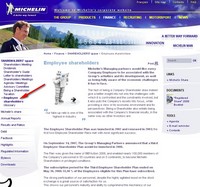 Thanks to a study paid for by food company PurAsia, a new demographic has been named – the gastrosexual. What’s a gastrosexual you ask? It’s a new term used to refer to men who like to spend time in their kitchens, and it’s a term that brands targeted to the overall male demographic are embracing quickly.
Thanks to a study paid for by food company PurAsia, a new demographic has been named – the gastrosexual. What’s a gastrosexual you ask? It’s a new term used to refer to men who like to spend time in their kitchens, and it’s a term that brands targeted to the overall male demographic are embracing quickly.
Imagine the Porsche kitchen or Peugeot salt and pepper shakers. Don’t laugh – both are already a reality. German luxury kitchen maker Poggenpohl already created the new P7340 kitchen for the gastrosexual crowd complete with Porsche and Peugeot branded design elements and products. [Read more…] about Brands Embrace Gastrosexuals



